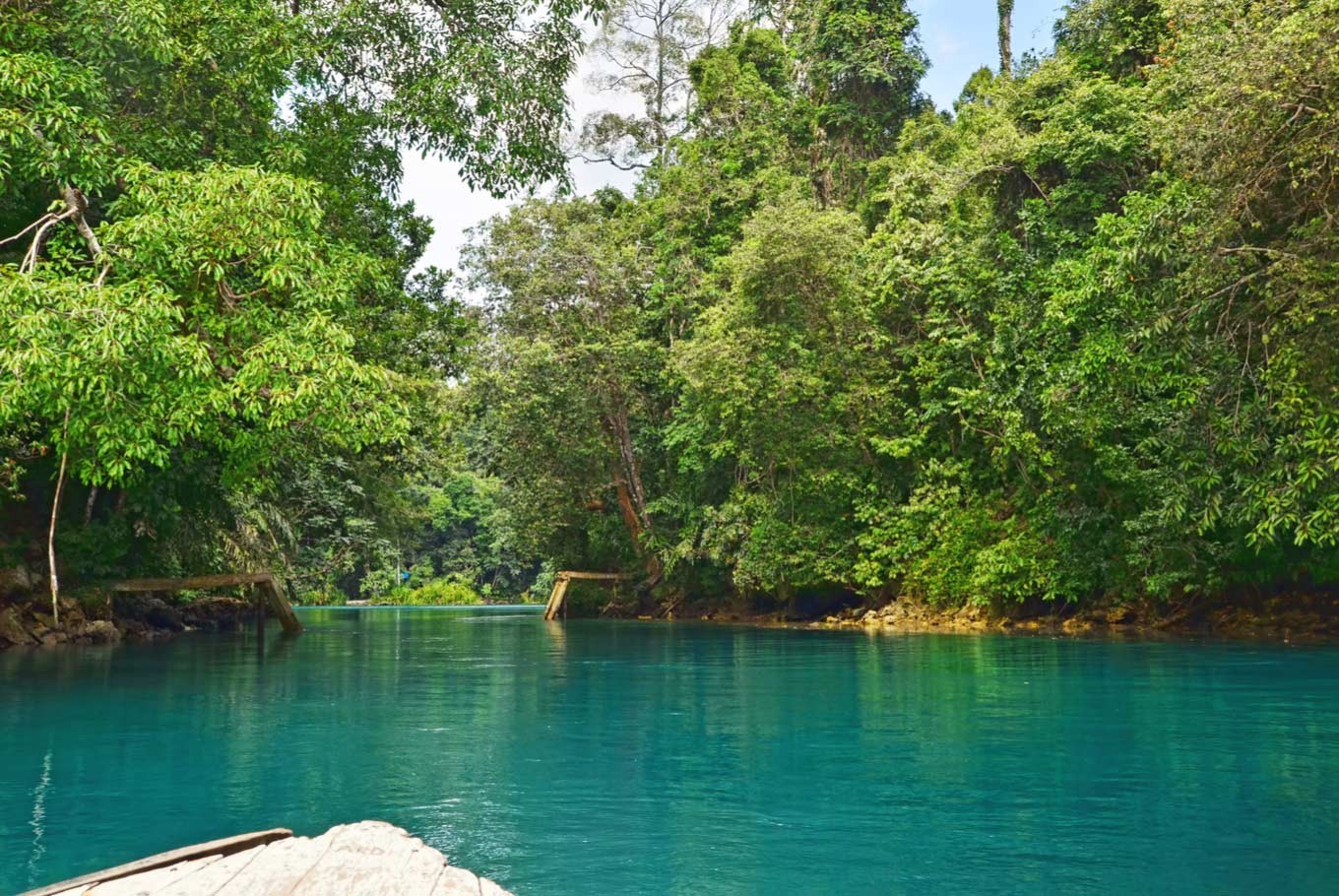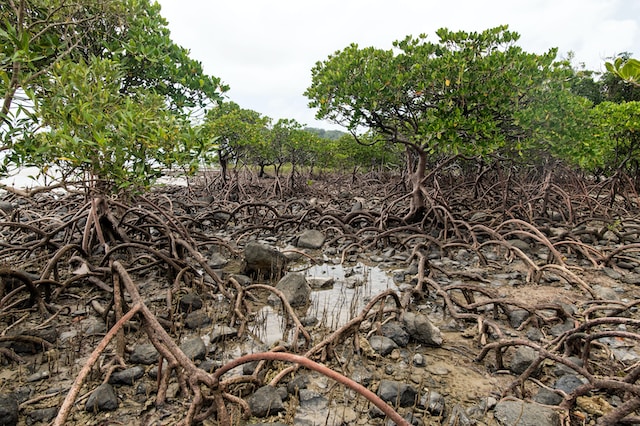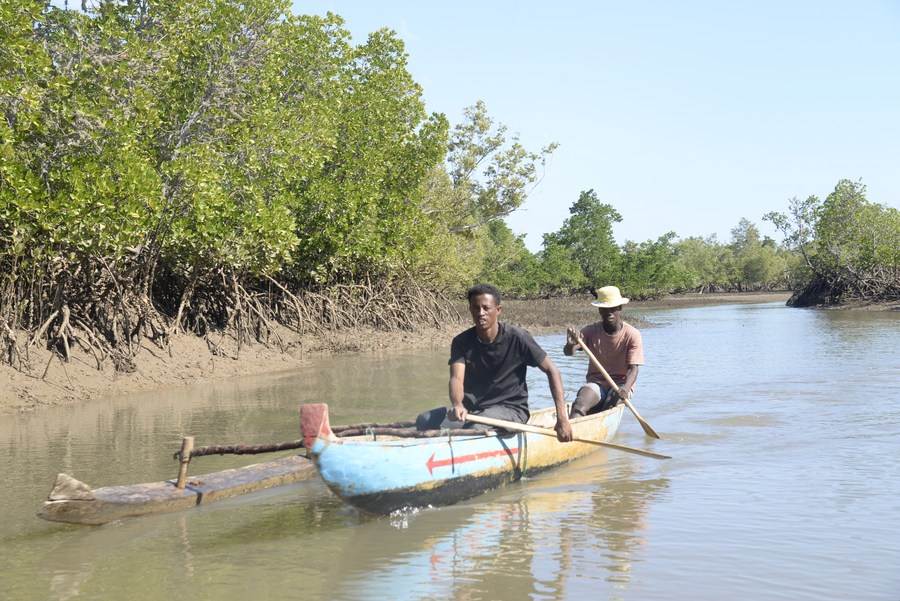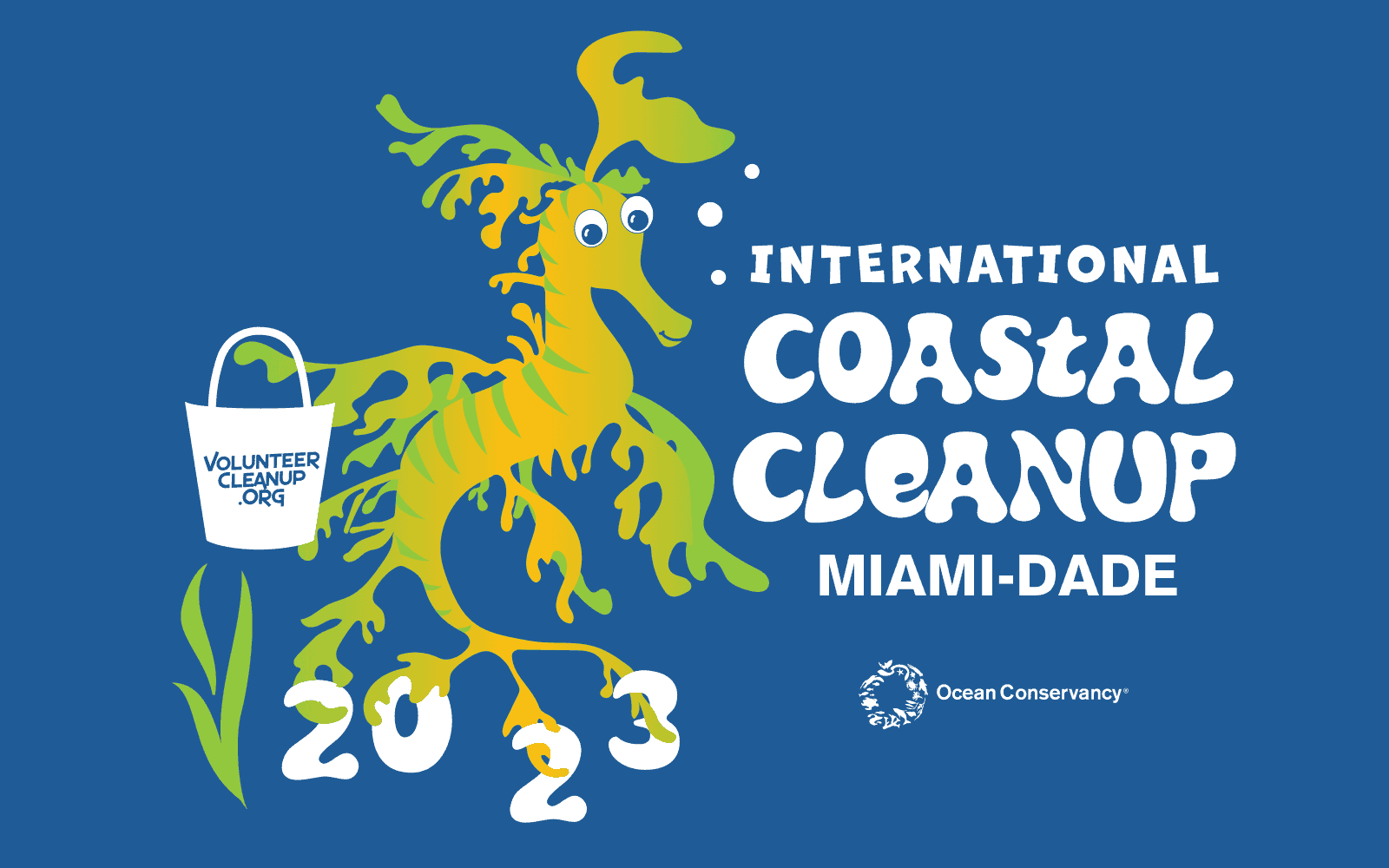MAP News Issue #578 – Aug 12, 2023
The MAP News | |
NOTICE CHILDREN’S CALENDAR ART SUBMISSIONS HAS NEW EMAILDue to technical problems, we are required to change the email address for submission to this year’s MAP Children’s Art Contest for the the upcoming 2024 Calendar. If you have already submitted art please contact Monica at ArtContest@mangroveactionproject.org to be sure your submissions have been received or for instructions on how to resubmit. If you have not yet submitted, please submit to this new email address before the August 31 deadline.FEATURED STORYDiscarded Plastic Blights Honduran Mangrove Island Editor’s Note: This news story is particularly sad for MAP because we implemented a CBEMR training workshop in Honduras in 2015 on this island that is now being inundated with trash. We can teach others to restore mangroves, but we still can’t stop people from trashing our planet on their lazy way through life.  HONDURASA heron chick flutters clumsily after hatching in a nest on a mangrove island littered with plastic waste in the Gulf of Fonseca, along the Pacific Coast of Central America. The air fills with shrieks of other seabirds also nesting on Los Pajaros Island, in the San Lorenzo Wildlife Reserve, set amid turquoise waters shared by Honduras, El Salvador and Nicaragua. Thousands of herons, gulls, pelicans, frigate birds, roseate spoonbills and other seabirds dwell in the tangle of HONDURASA heron chick flutters clumsily after hatching in a nest on a mangrove island littered with plastic waste in the Gulf of Fonseca, along the Pacific Coast of Central America. The air fills with shrieks of other seabirds also nesting on Los Pajaros Island, in the San Lorenzo Wildlife Reserve, set amid turquoise waters shared by Honduras, El Salvador and Nicaragua. Thousands of herons, gulls, pelicans, frigate birds, roseate spoonbills and other seabirds dwell in the tangle ofbranches on this 2.5 hectare island. But they share it these days with unwanted mounds of plastic bottles, tangles of fish netting and other discarded trash washed up on its shores. Residents in inland cities often throw their plastic waste into rivers that empty into the Gulf of Fonseca, despoiling the once-pristine habitat.An activist group, the Committee for the Defense and Development of the Flora and Fauna of the Gulf of Fonseca, has joined forces with the Forest Conservation Institute of Honduras (ICF) and municipalities along the coast to conduct cleanups. “These solid wastes… take years to decompose,” Helen Castillo of ICF tells AFP. GLOBAL Experts are Using AI To Save Mangroves — And the Planet
AFRICA Mangrove conservation takes root in Madagascar
AMERICAS Registration is now open for the 2023 International Coastal Cleanup Miami-Dade
Rare long-distance dispersal events help maintain genetic structure of mangroves
ASIA The guardians of the mangrove forest in West Kalimantan  INDONESIA – Imagine a world where 15 million people are safer from storms and flooding, where 4.1 million small-scale fishers have a secure livelihood, and where 25 billion fish and shellfish thrive. This isn’t a fantasy; it’s what could be achieved through the restoration of the world’s mangroves. Mangroves are nature’s shield against the wrath of rising seas and storm surges, especially for vulnerable coastal communities in Small Island Developing States (SIDS) and Least Developing Countries (LDCs). They are not just barriers; they are nurseries for marine life, carbon sinks, and symbols of culture and tradition. In the coastal villages of West Kalimantan, the devastation of once-thriving mangrove forests, essential to the livelihood of countless local fishers, has ignited a movement for restoration and rejuvenation. This effort is not merely about rebuilding a marine life habitat but reconnecting with a part of the community’s identity. Spearheaded by community members and supported by local governments, national authorities, Planet Indonesia, and the Global Mangrove Alliance, among others, efforts are underway to reconstruct what was lost. By blending modern scientific knowledge with traditional insights, villagers are nurturing the mangroves as symbols of their cultural heritage. INDONESIA – Imagine a world where 15 million people are safer from storms and flooding, where 4.1 million small-scale fishers have a secure livelihood, and where 25 billion fish and shellfish thrive. This isn’t a fantasy; it’s what could be achieved through the restoration of the world’s mangroves. Mangroves are nature’s shield against the wrath of rising seas and storm surges, especially for vulnerable coastal communities in Small Island Developing States (SIDS) and Least Developing Countries (LDCs). They are not just barriers; they are nurseries for marine life, carbon sinks, and symbols of culture and tradition. In the coastal villages of West Kalimantan, the devastation of once-thriving mangrove forests, essential to the livelihood of countless local fishers, has ignited a movement for restoration and rejuvenation. This effort is not merely about rebuilding a marine life habitat but reconnecting with a part of the community’s identity. Spearheaded by community members and supported by local governments, national authorities, Planet Indonesia, and the Global Mangrove Alliance, among others, efforts are underway to reconstruct what was lost. By blending modern scientific knowledge with traditional insights, villagers are nurturing the mangroves as symbols of their cultural heritage.Coastal Heroes: Mangroves, Safeguarding Biodiversity And Climate  INDIA – Beyond their ecological importance, mangrove forests are vital habitats for more than 75% of commercially important fish species, supporting the livelihoods of over 100 million people, as reported by the Food and Agriculture Organization of grounds for endangered species like sea turtles, migratory birds and even a “mangrove tiger” in India, demonstrating their significance in maintaining diverse marine life. The value of mangroves’ ecosystem services is estimated to be approximately USD 194,000 per hectare, as indicated by Barbier et al.’s research in 2011. Regrettably, these green guardians face a host of threats, leading to their decline in many regions across the globe. Alarming statistics show that for every one percent of mangrove loss, a staggering 200 million tonnes of carbon, once trapped in mangroves, is released into the atmosphere. In India, the country has lost approximately 40% of its mangroves due to factors such as urbanization, pollution, and unsustainable practices. Globally, mangrove cover has decreased by an estimated 35% since the 1980s. INDIA – Beyond their ecological importance, mangrove forests are vital habitats for more than 75% of commercially important fish species, supporting the livelihoods of over 100 million people, as reported by the Food and Agriculture Organization of grounds for endangered species like sea turtles, migratory birds and even a “mangrove tiger” in India, demonstrating their significance in maintaining diverse marine life. The value of mangroves’ ecosystem services is estimated to be approximately USD 194,000 per hectare, as indicated by Barbier et al.’s research in 2011. Regrettably, these green guardians face a host of threats, leading to their decline in many regions across the globe. Alarming statistics show that for every one percent of mangrove loss, a staggering 200 million tonnes of carbon, once trapped in mangroves, is released into the atmosphere. In India, the country has lost approximately 40% of its mangroves due to factors such as urbanization, pollution, and unsustainable practices. Globally, mangrove cover has decreased by an estimated 35% since the 1980s.OCEANA Local communities – Leading the charge towards mangroves conservation and restoration  FIJI – IUCN, the International Union for Conservation of Nature is often synonymous with work on environment conservation. One such programme hosted here in IUCN’s Oceania Regional Office is the Nature based Solutions (NbS) programme which hosts the Kiwa Initiative- small and medium grant programme,working with locally based projects on climate adaptation activities in response to climate change impacts- an issue that is fast becoming visible in our region. The Kiwa Initiative – Nature-based Solutions (NbS) for climate resilience aims at strengthening the climate change resilience of Pacific Islands ecosystems, communities and economies through NbS, by protecting, sustainably managing and restoring biodiversity- “Using Nature to Conserve Nature”. The Initiative was launched in 2020. For this year’s International Day for the Conservation of Mangrove Ecosystems, we will be spotlighting two Kiwa Initiative projects, who are working on mangroves conservation and restoration within their respective communities! The first project focusses on Restoring Mangroves for Livelihoods in Fiji. While the second, works with Customary Law for Fisheries and Marine Ecosystem Restoration in Timor-Leste. FIJI – IUCN, the International Union for Conservation of Nature is often synonymous with work on environment conservation. One such programme hosted here in IUCN’s Oceania Regional Office is the Nature based Solutions (NbS) programme which hosts the Kiwa Initiative- small and medium grant programme,working with locally based projects on climate adaptation activities in response to climate change impacts- an issue that is fast becoming visible in our region. The Kiwa Initiative – Nature-based Solutions (NbS) for climate resilience aims at strengthening the climate change resilience of Pacific Islands ecosystems, communities and economies through NbS, by protecting, sustainably managing and restoring biodiversity- “Using Nature to Conserve Nature”. The Initiative was launched in 2020. For this year’s International Day for the Conservation of Mangrove Ecosystems, we will be spotlighting two Kiwa Initiative projects, who are working on mangroves conservation and restoration within their respective communities! The first project focusses on Restoring Mangroves for Livelihoods in Fiji. While the second, works with Customary Law for Fisheries and Marine Ecosystem Restoration in Timor-Leste.
Pease consider donating to MAP to keep it going. *Articles in this newsletter may mention practices being used and/or show exagerated results being claimed without proof. Stories are presented here in effort to show mangrove related activity around the world and do not necessarily reflect Mangrove Action Project’s views or mangrove restoration best-practices. NOTICENOTICE CHILDREN’S CALENDAR ART SUBMISSIONS HAS NEW EMAIL Due to technical problems, we are required to change the email address for submission to this year’s MAP Children’s Art Contest for the the upcoming 2024 Calendar. If you have already submitted art please contact Monica at ArtContest@mangroveactionproject.org to be sure your submissions have been received or for nstructions on how to resubmit. If you have not yet submitted, please submit to the ArtContest@mangroveactionproject.org address before the August 31 deadline. ACTION ALERTSEcuador: Stop land grabbing and racial discrimination for palm oil! SIGN THE PETITIONUGANDA Stop criminalizing pipeline protesters! SIGN THE PETITIONSave Endangered Species From SpaceX | |
| Mangrove Action Project Click here to view past newsletters
| |

 GLOBAL – The World Wildlife Foundation (WWF) and Google.org (Google’s philanthropic arm) announced the launch of a project called ManglarIA. Spanish for “AI for Mangroves,” ManglarIA is a new, three-year project that will utilize artificial intelligence to understand how mangrove ecosystems — and their contributions to coastal communities — are affected by climate change. Mangroves are a uniquely resilient and helpful species. They are a group of shrubs or trees that grow along coastlines and tidal rivers and are able to store carbon at about four times the rate of other types of forests. They are an essential nature-based solution to climate change, providing vital levels of carbon sequestration and biodiversity to coastal ecosystems and economies — and it’s critical that they are protected. The project will identify key indicators of the health of mangroves and provide conservationists with better information to protect them, creating scalable and measurable solutions that can be replicated in other coastal regions.
GLOBAL – The World Wildlife Foundation (WWF) and Google.org (Google’s philanthropic arm) announced the launch of a project called ManglarIA. Spanish for “AI for Mangroves,” ManglarIA is a new, three-year project that will utilize artificial intelligence to understand how mangrove ecosystems — and their contributions to coastal communities — are affected by climate change. Mangroves are a uniquely resilient and helpful species. They are a group of shrubs or trees that grow along coastlines and tidal rivers and are able to store carbon at about four times the rate of other types of forests. They are an essential nature-based solution to climate change, providing vital levels of carbon sequestration and biodiversity to coastal ecosystems and economies — and it’s critical that they are protected. The project will identify key indicators of the health of mangroves and provide conservationists with better information to protect them, creating scalable and measurable solutions that can be replicated in other coastal regions. MADAGASCAR – To arrive in the village of Kivalo in southwestern Madagascar, an island country in the Indian Ocean, visitors have to take a 45-minute boat ride through beautiful mangroves from the nearest land point. Thanks to the efforts of grassroots communities and their global partners, the village now serves as an example of nature conservation that benefits both the environment and the people. “A hundred years ago, Kivalo was directly exposed to the Mozambique Channel, when the mangroves were not there yet. The change of the riverbed due to successive cyclones has favored the plantations of mangroves around the village,” said Justin Ramanahirana, president of a community organization managing mangrove conservation, known as the Analamaitso tsy ho gnan’olo (The green forest that is ours). The growth of mangroves has changed the lives of the 200 households who used to live on fishing in Kivalo for the better. “We protect the mangrove because all our money comes from it. We can catch 40 kilos of shrimp in a single catch. Thanks to the mangrove, it is no longer necessary to fish further out in the open sea,” said Ramanahirana, a 44-year-old father of two sons and five daughters.
MADAGASCAR – To arrive in the village of Kivalo in southwestern Madagascar, an island country in the Indian Ocean, visitors have to take a 45-minute boat ride through beautiful mangroves from the nearest land point. Thanks to the efforts of grassroots communities and their global partners, the village now serves as an example of nature conservation that benefits both the environment and the people. “A hundred years ago, Kivalo was directly exposed to the Mozambique Channel, when the mangroves were not there yet. The change of the riverbed due to successive cyclones has favored the plantations of mangroves around the village,” said Justin Ramanahirana, president of a community organization managing mangrove conservation, known as the Analamaitso tsy ho gnan’olo (The green forest that is ours). The growth of mangroves has changed the lives of the 200 households who used to live on fishing in Kivalo for the better. “We protect the mangrove because all our money comes from it. We can catch 40 kilos of shrimp in a single catch. Thanks to the mangrove, it is no longer necessary to fish further out in the open sea,” said Ramanahirana, a 44-year-old father of two sons and five daughters. USA – Registration is OPEN for the annual county-wide International Coastal Cleanup Miami-Dade to be held on Saturday, September 16th, 2023! Get ready to join millions of volunteers around the globe for the Ocean Conservancy’s 38th annual International Coastal Cleanup – the world’s LARGEST one-day volunteer effort for our oceans and waterways. Spearheaded globally by the Ocean Conservancy, VolunteerCleanup.org organizes Miami-Dade’s local participation in this annual event with 50+ simultaneous shoreline cleanups around the county and is made possible by the generous support of our presenting sponsors Covanta and Boucher Brothers, with additional support from Blackstone Charitable Foundation, The Brady Hunter Foundation, Benjamin & Gloria Joannou, Jr. Family Conservation Fund, City of Miami Beach, The Miami Foundation, Loud And Live, and Miami-Dade County RER-DERM. All volunteers will get a reusable tote bag with this year’s animal theme, the Seahorse! We will have contests for those who find the strangest thing, and as always, community service hours will be provided.
USA – Registration is OPEN for the annual county-wide International Coastal Cleanup Miami-Dade to be held on Saturday, September 16th, 2023! Get ready to join millions of volunteers around the globe for the Ocean Conservancy’s 38th annual International Coastal Cleanup – the world’s LARGEST one-day volunteer effort for our oceans and waterways. Spearheaded globally by the Ocean Conservancy, VolunteerCleanup.org organizes Miami-Dade’s local participation in this annual event with 50+ simultaneous shoreline cleanups around the county and is made possible by the generous support of our presenting sponsors Covanta and Boucher Brothers, with additional support from Blackstone Charitable Foundation, The Brady Hunter Foundation, Benjamin & Gloria Joannou, Jr. Family Conservation Fund, City of Miami Beach, The Miami Foundation, Loud And Live, and Miami-Dade County RER-DERM. All volunteers will get a reusable tote bag with this year’s animal theme, the Seahorse! We will have contests for those who find the strangest thing, and as always, community service hours will be provided.







